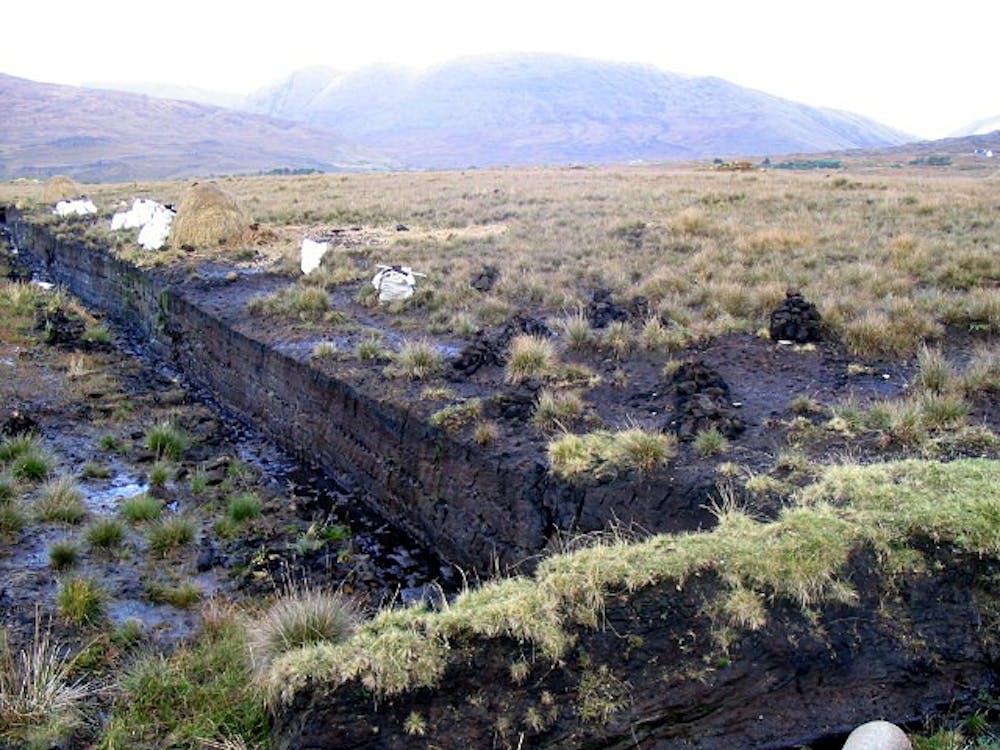Peatlands store twice as much carbon as all the world’s forests combined. How will climate change affect them?
A team of Duke scientists recently won a $3 million grant to travel around the world and find an answer. Working alongside scientists from Oak Ridge National Laboratory and researchers from the University of Tennessee to tackle the question, the researchers plan to experimentally warm peat environments in various locations to study how the peatland organisms respond.
“Climate change is arguably the most serious environmental problem that faces humanity and we really have to do something about it,” Professor of Biology Jonathan Shaw said. “Part of that is practical, finding alternative sources of fuel and energy, and part of it is scientific research so that we can better understand how things are working, so we need both.”
Rare but critical to ecology, peatlands cover only 3% of the Earth’s land surface, storing 370 million metric tons of carbon, but are in danger of burning or dying in rising temperatures. They form when watery conditions interfere with the decomposition of plants, creating a substance known as peat.
The team knows that microbial communities change in varying seasons and temperatures and that those changes “impact ecological functions such as nitrogen fixation,” Shaw explained.
He added that they hope to make reliable predictions about how viruses and protists—small, single-celled organisms—interact in an environment with rising temperatures. The team will collect field samples under various warming treatments and determine which microbes are in the samples.
Their goal is to understand how exactly the interactions between the protists, bacteria and viruses change with temperature, Shaw explained. They plan to analyze how protists prey on bacteria and the patterns of viral infections of the organisms.
Rising temperatures decay plant material faster, thus releasing more greenhouse gases into the atmosphere resulting in even hotter temperatures. Shaw added that the team wants to know how much of a temperature change we face, where the change will be centered and how it will affect the peatlands.
The researchers will continue studying the host peat moss species to analyze how accurately their model predicts nitrogen fixation, the ability to generate nitrogen that organisms can use.
“We sample both DNA and RNA. The DNA information tells us what microbes are there, and the RNA tells us which of those are active,” Shaw said.
The project began six years ago when Shaw and David Weston, a staff scientist at Oak Ridge National Laboratory, sequenced the genome of a peat moss species to understand DNA codes for the plants that store large amounts of carbon and how they could change in warmer temperatures.
For the next three years, the team members will travel to at least four experimental sites in Alaska, Minnesota, Sweden and France to collect samples.
“I will visit the sites myself each year, and at least one other of our participants will accompany me,” Shaw wrote in an email to The Chronicle.
Additionally, Shaw will travel to Iceland with Weston this October to sample from the natural hot springs, which he noted the team considers to be “a great natural laboratory impacted by high-temperature water generated by volcanic activity.”
The $3 million grant from the Department of Energy will primarily go toward sequencing genomes and paying the team of scientists for their work.
With many postdoctoral associates also working on the project, Shaw noted there’s also a learning component to the research as well.
“[The grant] really contributes to an educational mission as well as a scientific mission,” he said.
Get The Chronicle straight to your inbox
Sign up for our weekly newsletter. Cancel at any time.

